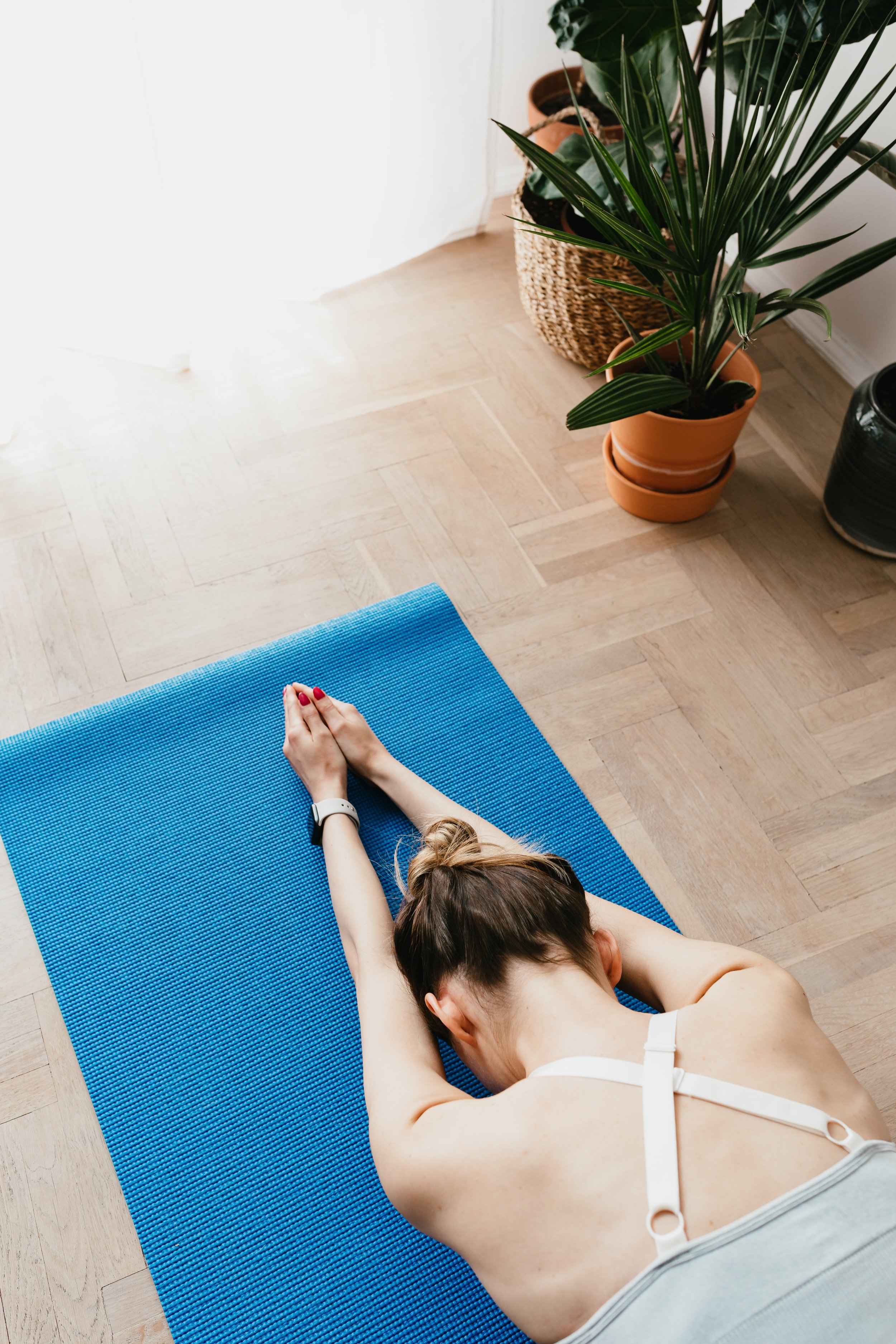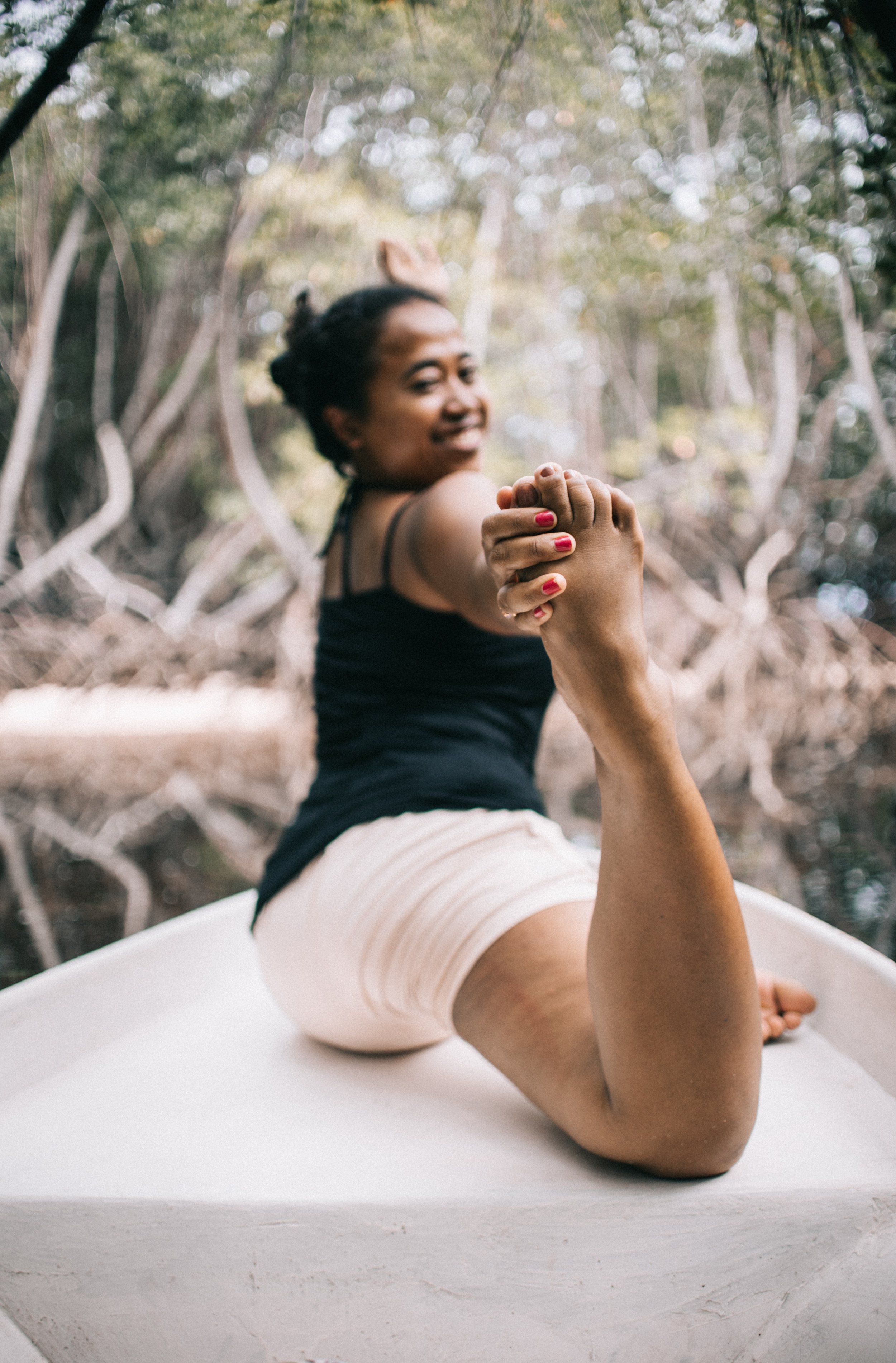Safely Introducing Running Postpartum.
I often get asked by mums who are running during pregnancy and those who have had their babies - when can they get their running shoes back on? The simplest answer is, NOT BEFORE 12 weeks postpartum. Capitals/Bold/Underline necessary there to stress the point that even if you are feeling like it seems the best idea for your physical and mental health to start running before this time, please wait, more harm can be done than good. The body needs time to HEAL. I’m going to talk more about how to mindfully and safely introduce running postpartum plus things to check before and look out for along the way. Really important to mention here that your progression back to exercising will depend on your level of activity before and during pregnancy. Easy does it.
“But I’ve been running safely throughout my pregnancy, why can’t I get back to it sooner?”
We must think of the body as whole system when returning back to exercise, especially high impact exercise such as running. Pregnancy and birth have a knock on effect on the body which is completely normal - hormonal changes, centre of gravity change causing instability, possible fascia damage, abdominal separation known as Diastasis Recti Abdominis, how we breathe and the pelvic floor to name a few. It takes up to around 9 months for the body to return to its pre-birth state. We must also be aware of more severe issues such as prolapse, stress incontinence and any pain in the body.
For the most part, it takes roughly around 6 months for all hormones to right themselves after birth HOWEVER one of the pregnancy hormones RELAXIN can take up to 18 months to leave the mothers system, longer if breastfeeding. Relaxin does what it says on the tin - it is in charge of relaxing the uterus, pelvis, linea alba (connective tissue between stomach muscles) preparing the body for a growing baby and birth. Relaxin affects the stability of the joints, something we must be aware of when exercising. Our balance and proprioception, key elements we rely on when running are likely to be affected too.
Diastasis Recti Abdominis also known as Abdominal Separation. Image - iStock by Getty Images
It is normal for the abdominal muscles to separate during pregnancy, this is known as abdominal separation or by its formal name Diastasis Recti Abdominis. The anterior (front) abdominal wall muscles, the Rectus Abdominis which we tend to refer as our ‘abs’ or ‘six pack’ will part plus the connective tissue between the abs known as the Linea Alba must stretch, all to make room for the growing baby. This palpable gap may return to normal in its own time but for some women the gap may remain large causing vulnerability in this area for many years or likely the rest of their lives if corrective measures are not sought. Running can make abdominal separation worse. If you are at all worried please seek advice from a Womens’ Health Physiotherapist or a fitness professional with expertise in the postpartum body. I will name some professionals and resources I recommend to my clients below.
Image - Pexels.com
When running, breathing in a healthy, efficient way is essential for best performance and ease. It is important we engage the diaphragm using a full, steady, slow and rhythmic breath. During pregnancy due to a growing baby taking up space, it is likely we have become used to breathing more into the chest rather than belly, therefore, postnatally we must re-educate our breathing patterns incorporating diaphragmatic breathing, getting the breath down into the belly and lower rib areas. Thinking of a 360 degree expansion with the inhale. Initially when we start practicing this breathing or breathwork, the diaphragm can feel quite stuck due to it not being engaged properly for months. Don’t worry, just keep up a routine of practicing diaphragmatic breathing as much as you can. I advise clients to practice whenever they are doing a certain repetitive activity such as boiling the kettle, allowing them to incorporate it into their day.
Female Pelvic Floor Muscles
When we run, each stride puts pressure on the pelvic floor, a hammock of muscles and connective tissue which support the pelvic organs - bladder, vagina, uterus and bowel. Before you you contemplate any running the pelvic floor muscles must be in good shape. Signs of a weak or Hypo-tonic pelvic floor include leaking urine and/or gas when sneezing, coughing, laughing, difficultly in performing a kegel and decreased sensation during sex. Signs of a tight or Hyper-tonic pelvic floor include difficulty in starting to pee, feeling like you need to pee straight after you’ve been, constipation, skinny poos, pain with penetration, leaking urine, feeling like you can’t relax your pelvic floor. Leaking should not be happening 6-8 weeks after baby has been born. If it is please go to your doctor or womens’ health physio if you have any concerns. Many of my clients have said the best money they have spent was seeing a womens’ health physio postpartum, even for a check up to make sure all is ok. I have listed a few physios I recommend in the resources below.
“Can I still exercise if I am breastfeeding?”
Yes, absolutely. I would recommend you feed before you exercise.
All images - Pexels.com
Introducing low impact exercise:
From 6 weeks, as long as YOU FEEL you are up to it (please avoid looking at others’ work out routines on Instagram) you could start low impact forms of exercise. Great for mental health and to start getting used to moving in your postpartum body. The key is acceptance here, your body cannot be ‘the same as it was before’, it just can’t. You have grown and birthed a baby, whatever your birth looked like. We need to start slow, low impact and mindfully. Forms of exercise which are super to start with are yoga, pilates, swimming, walking and dancing. Of course I am going to push the benefits of yoga postnatally - it is a great accompaniment to running for many physical reasons but here I want to mention the mindful aspect of connecting with the body and breath to learn and be honest with ourselves when we are meeting our edge or have pushed too far. Yoga and other practices can be done in a group environment, try and join a class locally if you can to gain connection with others, again, benefitting mental and physical health. If it is not possible to get out/leave baby, there are many classes online.
Recovery from Caesarean / Abdominal Births
I will talk more about this topic down the line but in term of getting going again after a c-section or abdominal birth it is super important to be mindful and honest with yourself how you feel at all time and stop if it just doesn’t feel right. A caesarean is a major operation and recovery must be treated as such. As with a vaginal birth it is advised to wait 6 weeks before you start with low impact exercise and IF YOU FEEL at 12 weeks you want to start to include a short jog go ahead but just be mindful and build up slowly. It is totally ok if you feel you need to wait longer, each body is different and has its own healing journey. Scars should have healed and no bleeding. Please check with a health care professional by way of physical examination if you are in any way unsure.
BEFORE YOU RUN
At your 6 week health check up - book 2x appointment slots - one for baby to be checked, one for you to be checked
Postpartum bleeding must have stopped
All scars healed and clean
If you are breastfeeding, ensure you have a good breastfeeding supply established
Make sure your running shoes fit - women’s feet may gain in size after pregnancy due to retained water
Assess your energy daily, Do you have the energy today to run?
Note, you may sweat more due to retained water during pregnancy
Warm up beforehand and cool down when you are finished
Yorkshire’s best running with pram friendly trails. Some are loops others not, venture out into the beautiful Yorkshire countryside to places such as Fewston Reservoir loop, Pugney’s Country Park loop, Skelton Lake loop, Huddersfield Narrow Canal, Leeds and Liverpool Canal, Newmillerdam Country Park loop and Oakwell Hall Park.
RESOURCES -
Womens’ Health Physiotherapists -
The Mommy MOT - find your nearest trusted womens health physio RePhysio (Fulham, London) - Clare Pacey
Alma Physiotherapy (Bristol) - Liz Brown
Pram Running / Pram Fitness Groups -
Buggy 4 Fitness Calderdale - Sharon Porter
Yoga Studios and Classes -
Om is Where the Heart is - Slaithwaite, Huddersfield - Postnatal Yoga +6 weeks postpartum (babies welcome before they are crawling)
Pelvic Floor Health -
BTL EMSELLA CHAIR treatment - many locations / clinics available
Thank you for reading and please feel free to contact me with any questions you have. Virginia x














